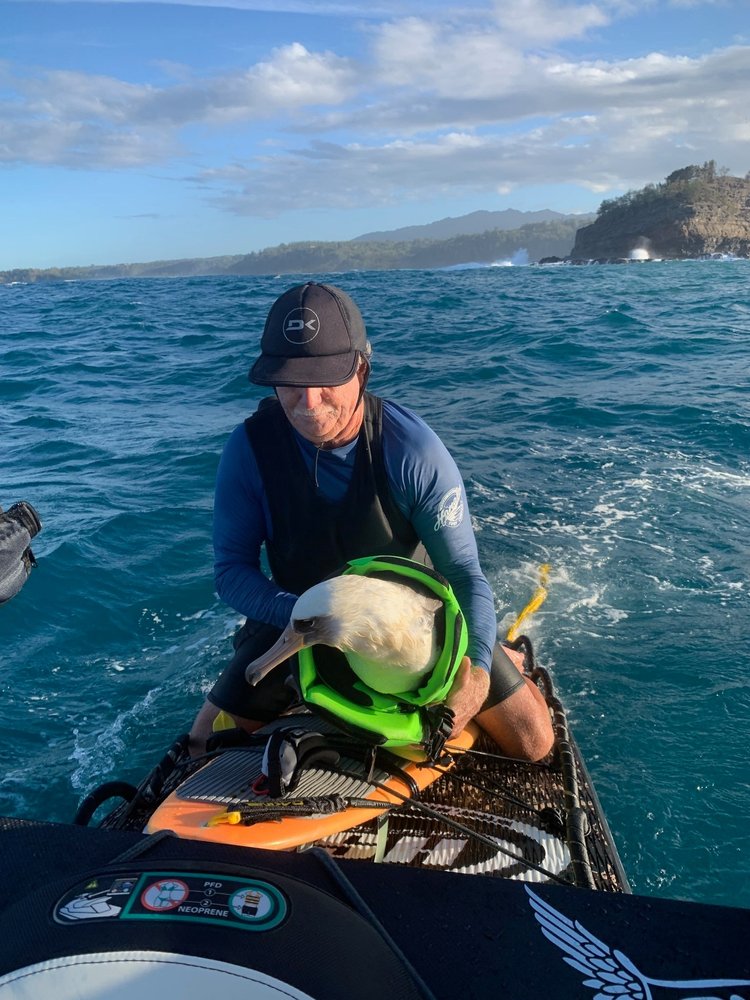
Greg Yost holds the waterlogged Laysan Albatross rescued at sea; photograph by Howie Grene
On 26 December last year a Laysan Albatross or Mōlī Phoebastria immutabilis was found waterlogged and struggling at sea about 2.5 km offshore from the Kīlauea Point National Wildlife Refuge (KPNWR) on the Hawaiian island of Kauai.
The following edited account is taken from the Save our Shearwaters website:
“It was probably only a matter of minutes or hours before the albatross drowned,” said Howie Grene, one of the bird’s rescuers, “the wings were all out as he tried to keep himself afloat, his head was just barely above water and his body was submerged.” The rescuers were able to safely capture the albatross and bring it (gender unconfirmed, suspected female) to Kaiakea Fire Station, where Save Our Shearwaters (SOS) staff collected the bird. Its numbered leg band allowed it to be identified as an active nester, last seen incubating on 22 December within the wildlife refuge.
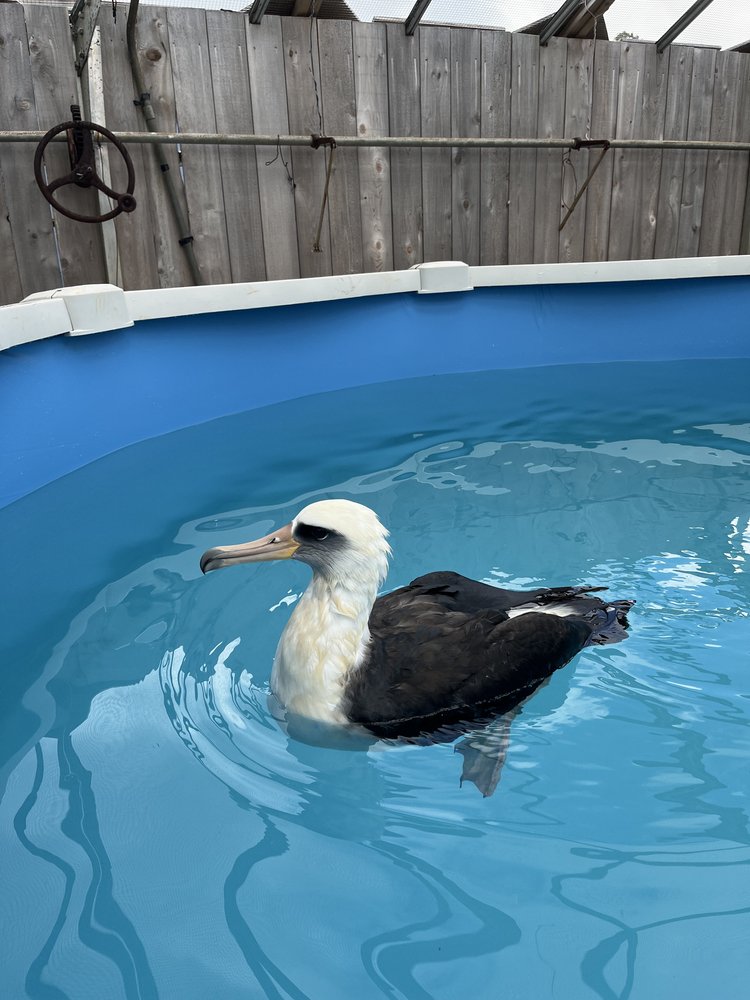
ANP081 sinks in SOS's conditioning pool due to its contaminated plumage; photograph by Amanda Parrish
Upon arrival at SOS, the albatross was assigned the patient ID number ANP081 and received a full examination. It was noted that its plumage was covered in a light-yellow contaminant. It was placed in SOS’s conditioning pool, where water quickly penetrated through the bird’s feathers all the way to the skin.
“It is vital that pelagic birds such as mōlī are completely waterproof prior to release,” said Jacqueline Nelson, Wildlife Rehabilitation Manager for SOS, “otherwise, water can reach their skin causing them to become hypothermic or have difficulty taking flight off the water and foraging for food.”
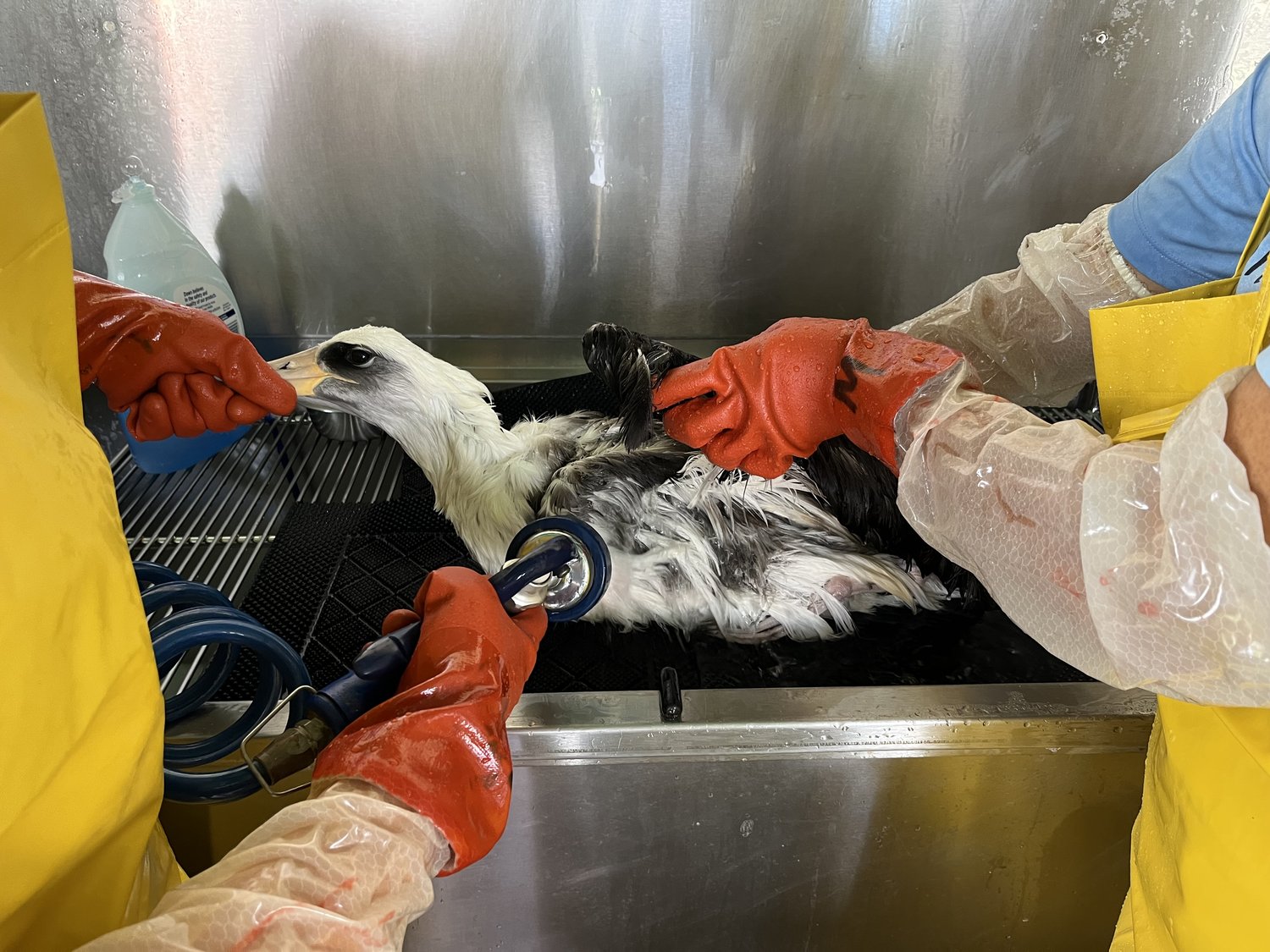
SOS staff wash ANP081 to remove contaminants from its feathers; photograph by Keane Sammon
As this patient was an active nester, time was of the essence to get it back into the wild as quickly as possible. Trained SOS staff completed an extensive wash procedure to remove any contaminants from ANP081’s plumage. The bird spent two additional days at the rehabilitation facility, where staff monitored buoyancy and checked to ensure its feathers remained dry while pooling. After passing its final waterproofing and health evaluations, the bird was released successfully at Anahola Beach on 2 January.

ANP081 on Anahola Beach prior to taking off toward the sea; photograph by Jacqueline Nelson
On 7 January, KPNWR reported on their Facebook page that 64 mōlī eggs were crushed or eaten by pigs on Nihokū beginning on 22 December (click here). KPNWR confirmed that ANP081’s nest was one of the ones that had been depredated by a pig. This depredation event is suspected to be the cause of ANP081’s waterproofing issues because the yolk from its destroyed egg would explain the light-yellow substance found on its feathers.
US Fish and Wildlife Service staff, in coordination with Pacific Rim Conservation, have been working to finish expanding their predator-resistant fencing to encompass the area where these mōlī nests are located. The fence is scheduled to be completed in just a few months (click here).
Heather Abbey-Tonneson, Refuge Complex Manager for KPNWR stated, "In addition to SOS, our partnerships with Pacific Rim Conservation, Pono Pacific, State of Hawai`i Department of Land and Natural Resources, Kauaʻi Endangered Seabird Recovery Project, and American Bird Conservation [sic] on our nearly 2-mile [c. 3 km] predator-resistant perimeter fence will protect mōlī and other species on 168 acres. [68 ha].”
John Cooper, Emeritus ACAP Information Officer, 03 February 2023

 English
English  Français
Français  Español
Español 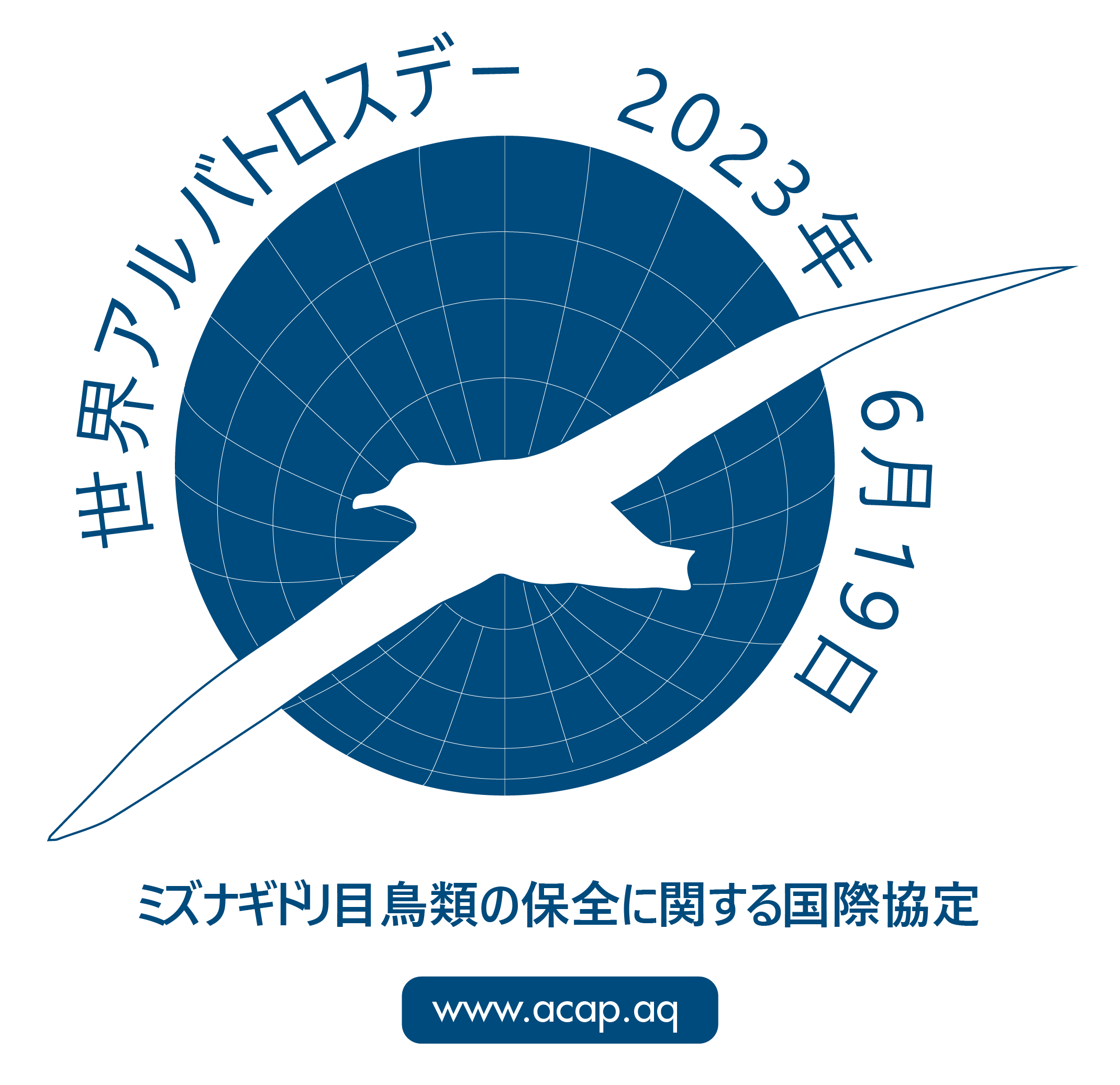
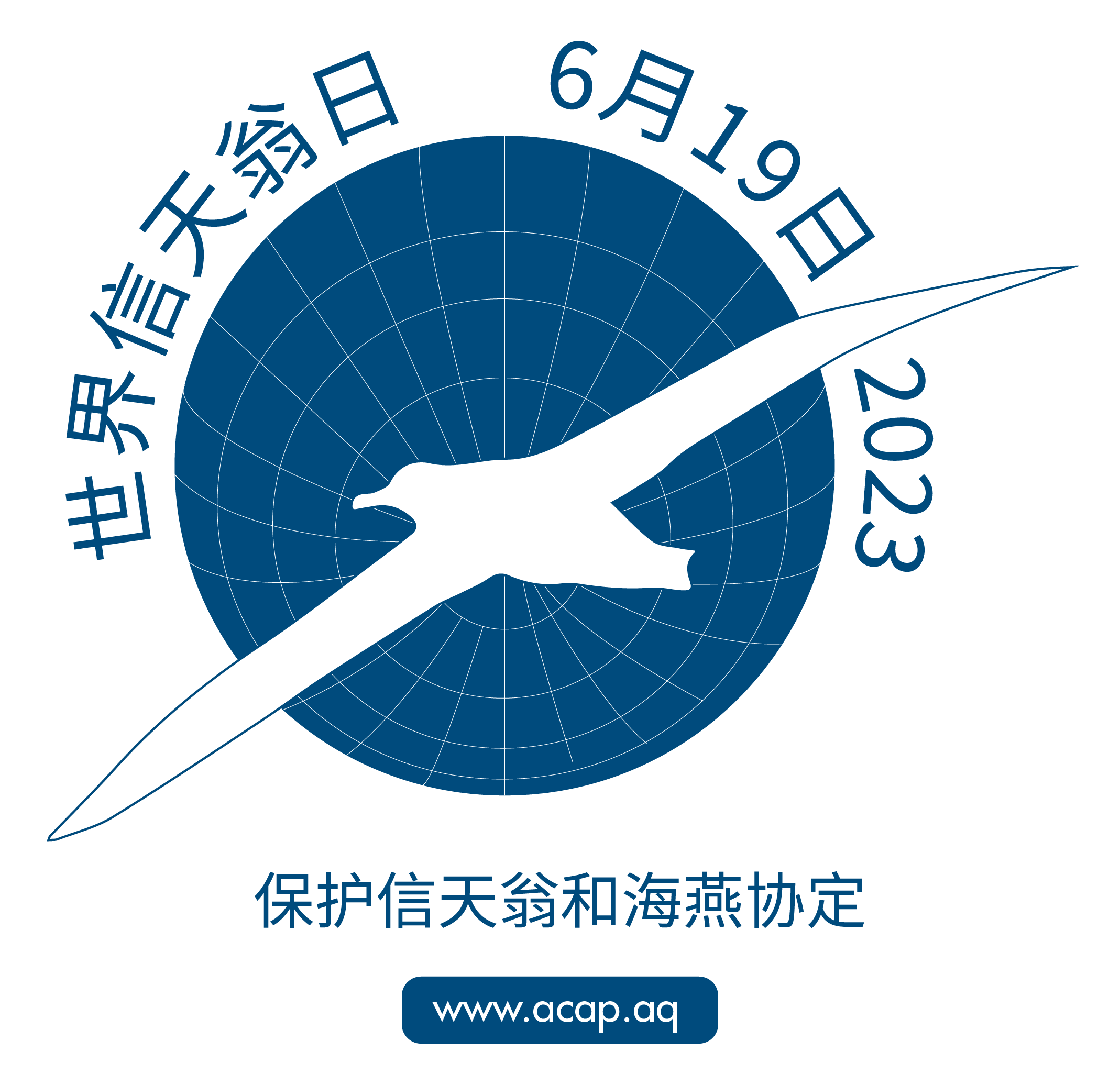
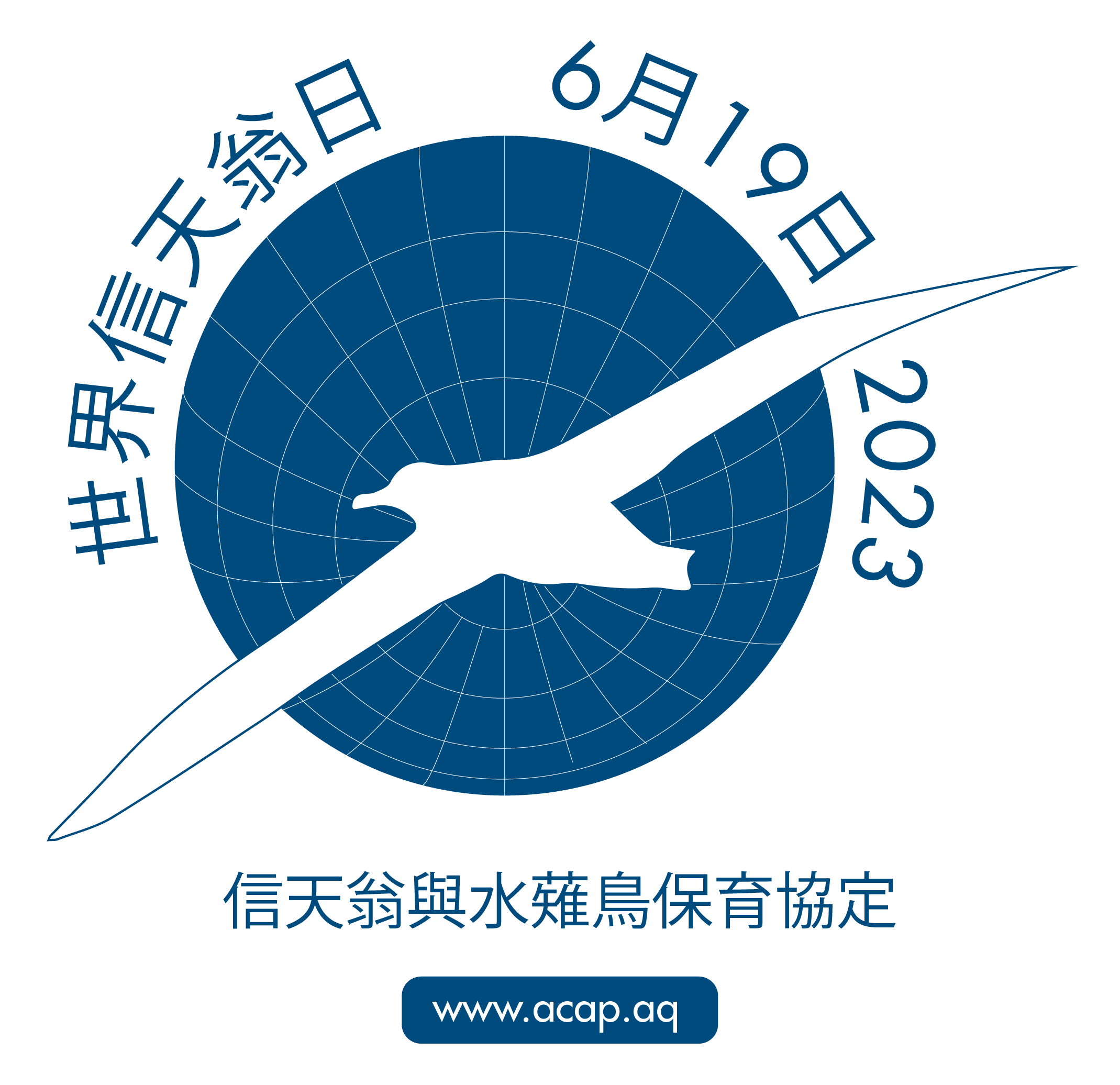
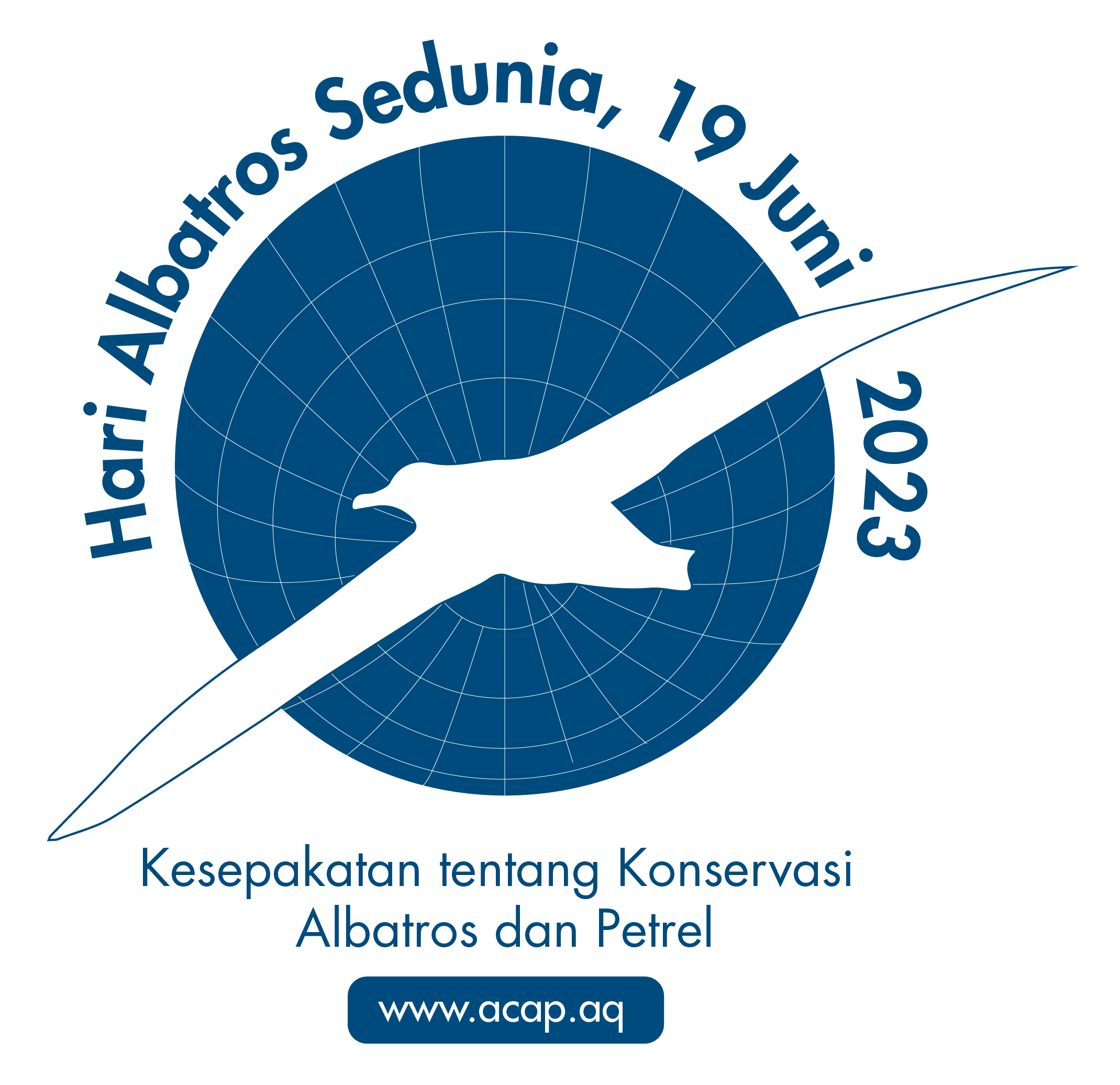
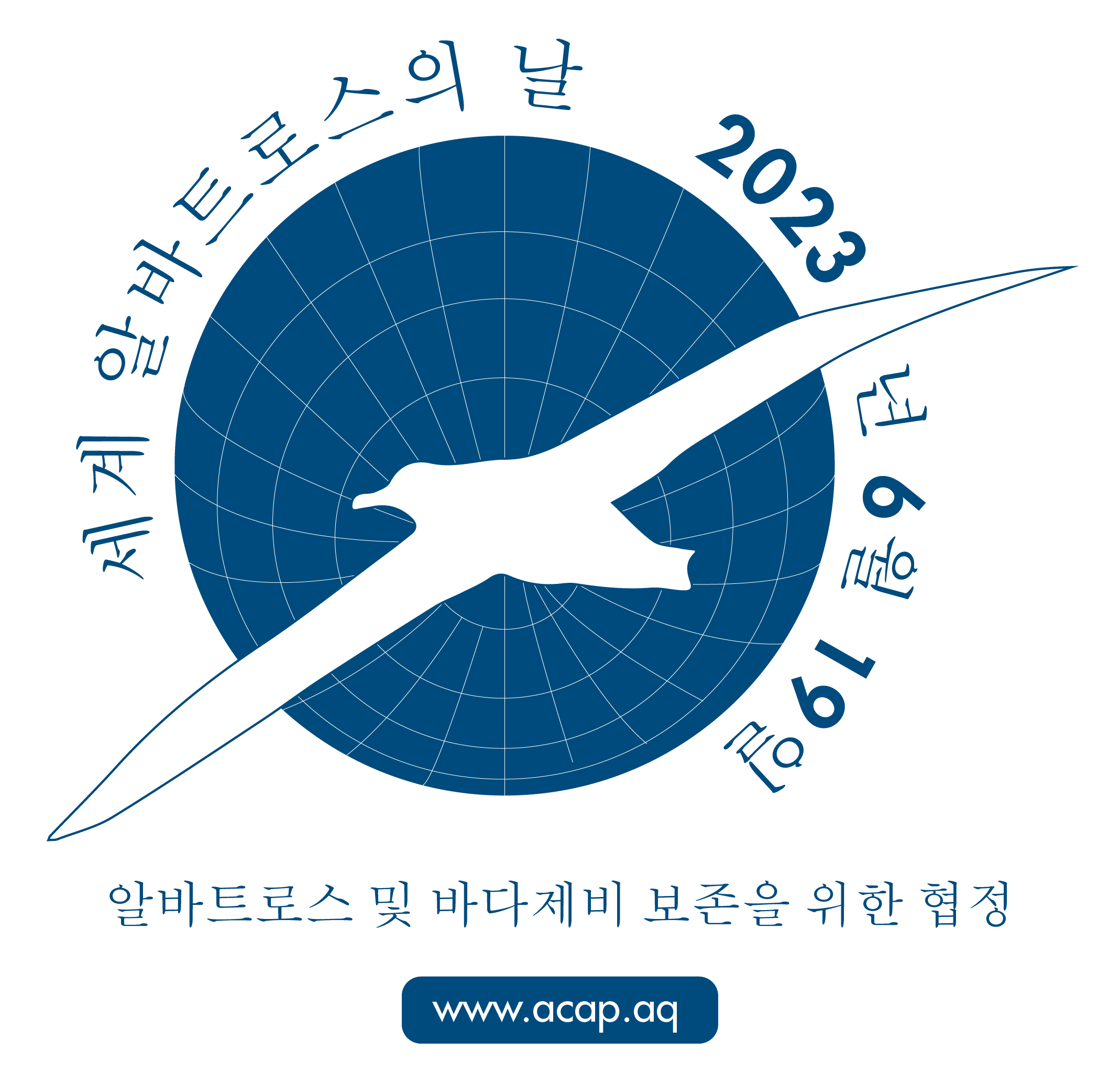
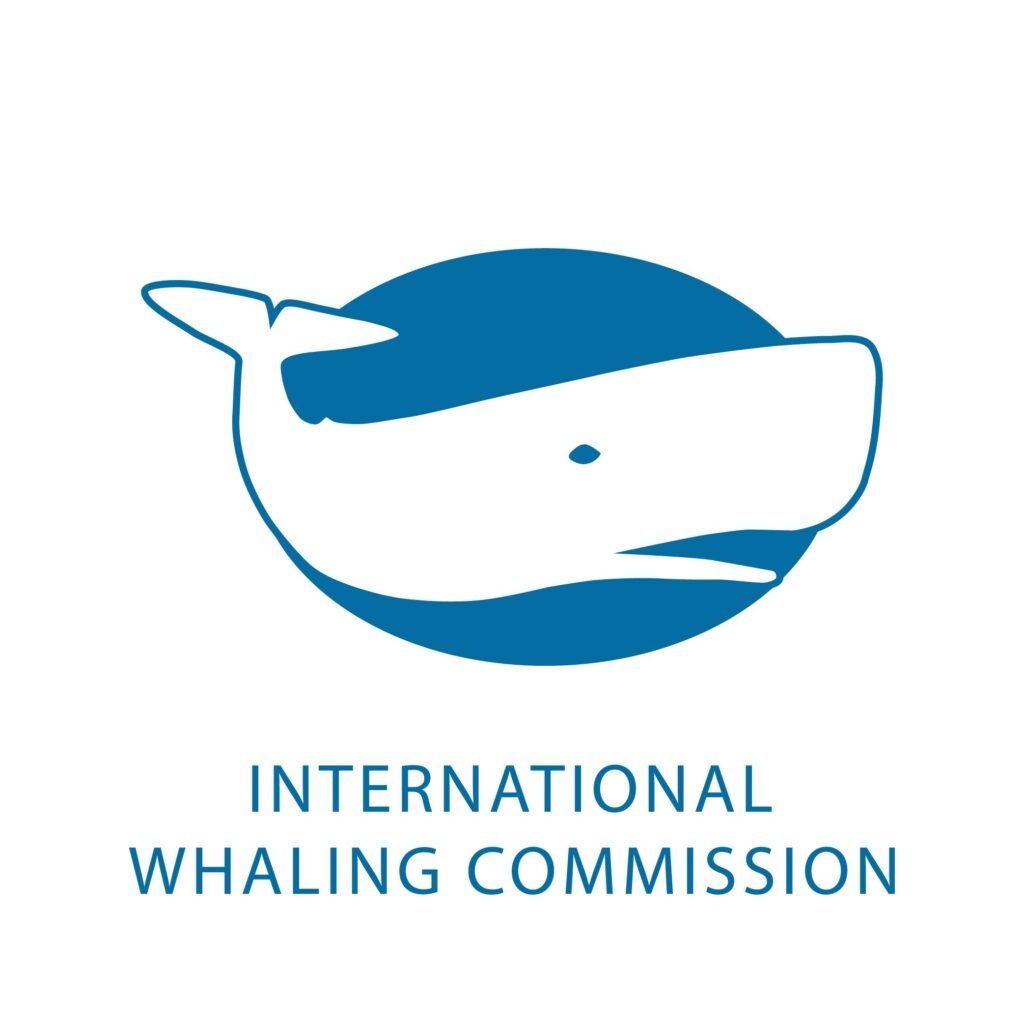 The International Whaling Commission (IWC) is recruiting for the role of Executive Secretary. The IWC is an intergovernmental organisation responsible for the conservation of whales and management of whaling. Established in 1946 and with a current membership of 88 governments across the globe, the role of the Executive Secretary entails coordinating the interests of all member Governments.
The International Whaling Commission (IWC) is recruiting for the role of Executive Secretary. The IWC is an intergovernmental organisation responsible for the conservation of whales and management of whaling. Established in 1946 and with a current membership of 88 governments across the globe, the role of the Executive Secretary entails coordinating the interests of all member Governments.

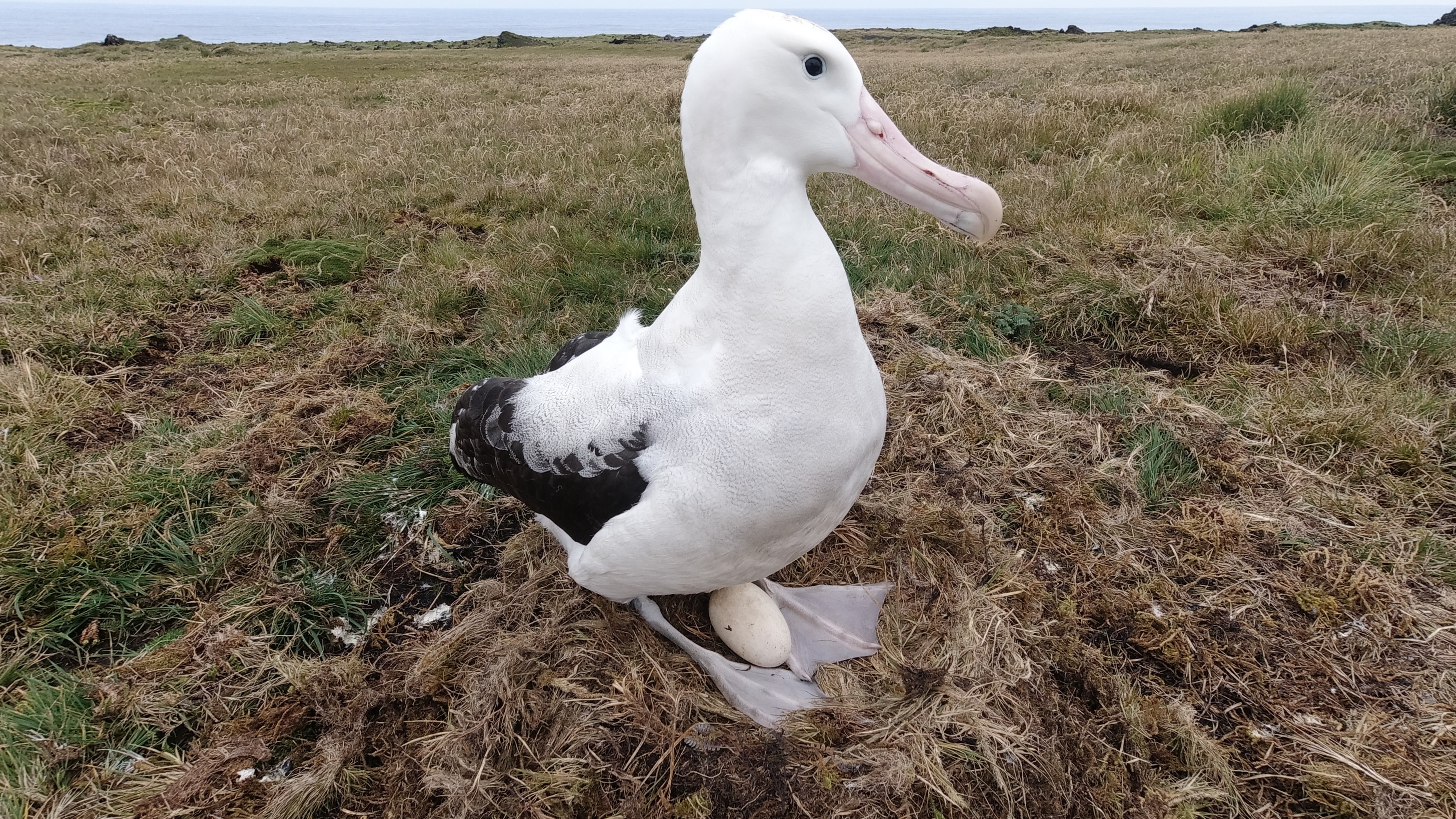

 Displaying Vulnerable Wandering Albatrosses Diomedea exulans on Marion Island; photograph by Otto Whitehead
Displaying Vulnerable Wandering Albatrosses Diomedea exulans on Marion Island; photograph by Otto Whitehead